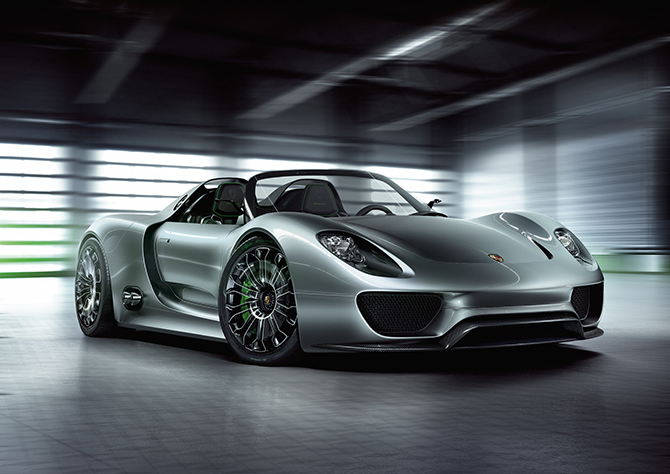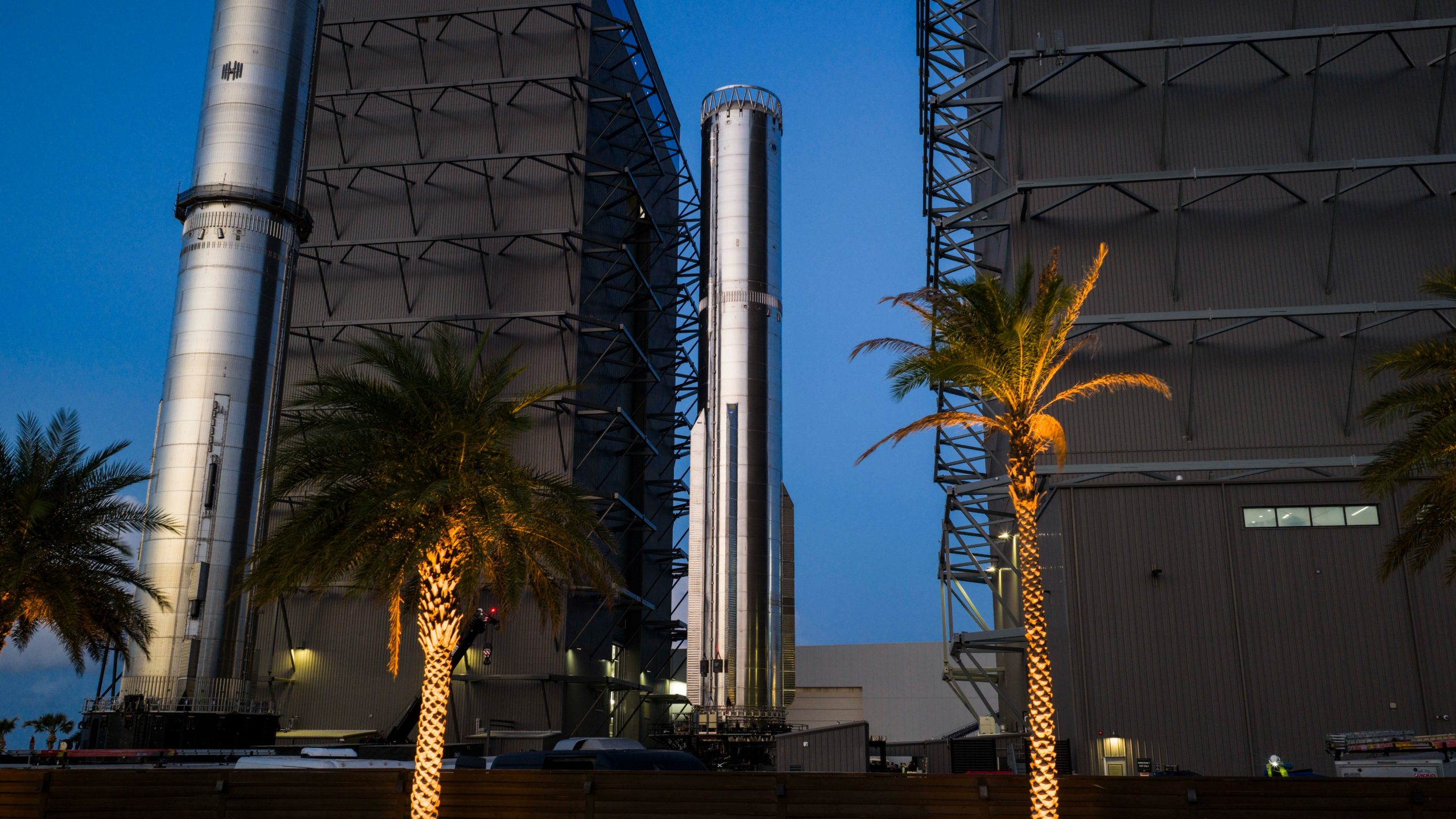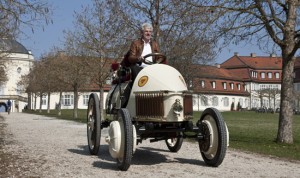News
Will Porsche’s new electric compete with Tesla?


It makes sense for Porsche to jump on the opportunity to build its own electric car. After producing the stunning plug-in hybrid (PHEV) 918, will Porsche use its experience to compete with Tesla Motors?
Can Porsche compete with Tesla?
When it comes to experience and lifestyle, Porsche is one of those rare automakers that can claim a strong culture around their products. The clientèle Porsche covers is wide and varied from your local automotive enthusiast to the who’s who in Hollywood, Porsche customers are well diversified. After the company developed its amazing 918 PHEV with much fanfare, it stands to reason it has learned enough about electric vehicles (EV) to make its own. At the very least, of all German carmakers, Porsche would be the best bet for a clear competition to Tesla.
Porsche, the original electric car.
We would be remiss not to mention that Porsche’s first car was electric, back in 1897. To be clearer, Ferdinand Porsche’s first car was electric and his second was a hybrid. It was basically the idea with an internal combustion engine (ICE) mated to it. Fast-forward 117 years later, and the company seems set to once again ready return to electricity.
Porsche is an odd bird. Starting its commercial life with an inherently flawed unstable design, putting an engine behind the rear axle certainly calls for some spectacular slides coming out of curves enthusiastically. But over the decades, the designed was so refined, albeit through copious use of electronics to make its 911 series one of the most versatile car in the world. Your grandmother to Sebastian Vettel can drive one and not be bored.
Still, many would consider Mercedes and BMW to be better direct competition to Tesla. We, however, have a harder time seeing how their gasoline cars, or even hybrids can. They are very different, not simply in terms of design, but by definition. Also, BMW and Mercedes’ electric vehicles are small, and certainly no match for the sedan Model S. Mercedes might have a certain lifestyle associated with the brand, and BMW has a strong culture behind it, neither one of them has that Tesla Motors feel, that combination of modern startup meets the performance of wildest daily dreams.
Porsche would be a great competition. It had a pilot program three years with three Boxster E prototypes. They sported two electric motors on each axle producing a combined 240 HP with 398 Lb-ft of torque, which launched it from 0 to 62 mph in 5.3 seconds. However, we don’t know much, if anything at all concrete about how and when the company would build a commercially available EV. The few extrapolations we can make is that the electric Porsche would aim for performance, something a Porsche buyer would expect.
What other competition?
The only other competition Tesla would have would be from Porsche’s other family member, AUDI. The company notoriously teased us with its all-electric e-tron, back in 2009. However, it has gone from a yes, to a no, to a maybe, and now, back again to a yes. The A3 e-tron is a good step forward, but it certainly isn’t a direct contender to Tesla’s amazing Model S. Would Porsche be a better contender?

Elon Musk
SpaceX issues statement on Starship V3 Booster 18 anomaly
The incident unfolded during gas-system pressure testing at the company’s Massey facility in Starbase, Texas.

SpaceX has issued an initial statement about Starship Booster 18’s anomaly early Friday. The incident unfolded during gas-system pressure testing at the company’s Massey facility in Starbase, Texas.
SpaceX’s initial comment
As per SpaceX in a post on its official account on social media platform X, Booster 18 was undergoing gas system pressure tests when the anomaly happened. Despite the nature of the incident, the company emphasized that no propellant was loaded, no engines were installed, and personnel were kept at a safe distance from the booster, resulting in zero injuries.
“Booster 18 suffered an anomaly during gas system pressure testing that we were conducting in advance of structural proof testing. No propellant was on the vehicle, and engines were not yet installed. The teams need time to investigate before we are confident of the cause. No one was injured as we maintain a safe distance for personnel during this type of testing. The site remains clear and we are working plans to safely reenter the site,” SpaceX wrote in its post on X.
Incident and aftermath
Livestream footage from LabPadre showed Booster 18’s lower half crumpling around the liquid oxygen tank area at approximately 4:04 a.m. CT. Subsequent images posted by on-site observers revealed extensive deformation across the booster’s lower structure. Needless to say, spaceflight observers have noted that Booster 18 would likely be a complete loss due to its anomaly.
Booster 18 had rolled out only a day earlier and was one of the first vehicles in the Starship V3 program. The V3 series incorporates structural reinforcements and reliability upgrades intended to prepare Starship for rapid-reuse testing and eventual tower-catch operations. Elon Musk has been optimistic about Starship V3, previously noting on X that the spacecraft might be able to complete initial missions to Mars.
Investor's Corner
Tesla analyst maintains $500 PT, says FSD drives better than humans now
The team also met with Tesla leaders for more than an hour to discuss autonomy, chip development, and upcoming deployment plans.

Tesla (NASDAQ:TSLA) received fresh support from Piper Sandler this week after analysts toured the Fremont Factory and tested the company’s latest Full Self-Driving software. The firm reaffirmed its $500 price target, stating that FSD V14 delivered a notably smooth robotaxi demonstration and may already perform at levels comparable to, if not better than, average human drivers.
The team also met with Tesla leaders for more than an hour to discuss autonomy, chip development, and upcoming deployment plans.
Analysts highlight autonomy progress
During more than 75 minutes of focused discussions, analysts reportedly focused on FSD v14’s updates. Piper Sandler’s team pointed to meaningful strides in perception, object handling, and overall ride smoothness during the robotaxi demo.
The visit also included discussions on updates to Tesla’s in-house chip initiatives, its Optimus program, and the growth of the company’s battery storage business. Analysts noted that Tesla continues refining cost structures and capital expenditure expectations, which are key elements in future margin recovery, as noted in a Yahoo Finance report.
Analyst Alexander Potter noted that “we think FSD is a truly impressive product that is (probably) already better at driving than the average American.” This conclusion was strengthened by what he described as a “flawless robotaxi ride to the hotel.”
Street targets diverge on TSLA
While Piper Sandler stands by its $500 target, it is not the highest estimate on the Street. Wedbush, for one, has a $600 per share price target for TSLA stock.
Other institutions have also weighed in on TSLA stock as of late. HSBC reiterated a Reduce rating with a $131 target, citing a gap between earnings fundamentals and the company’s market value. By contrast, TD Cowen maintained a Buy rating and a $509 target, pointing to strong autonomous driving demonstrations in Austin and the pace of software-driven improvements.
Stifel analysts also lifted their price target for Tesla to $508 per share over the company’s ongoing robotaxi and FSD programs.
Elon Musk
SpaceX Starship Version 3 booster crumples in early testing
Photos of the incident’s aftermath suggest that Booster 18 will likely be retired.

SpaceX’s new Starship first-stage booster, Booster 18, suffered major damage early Friday during its first round of testing in Starbase, Texas, just one day after rolling out of the factory.
Based on videos of the incident, the lower section of the rocket booster appeared to crumple during a pressurization test. Photos of the incident’s aftermath suggest that Booster 18 will likely be retired.
Booster test failure
SpaceX began structural and propellant-system verification tests on Booster 18 Thursday night at the Massey’s Test Site, only a few miles from Starbase’s production facilities, as noted in an Ars Technica report. At 4:04 a.m. CT on Friday, a livestream from LabPadre Space captured the booster’s lower half experiencing a sudden destructive event around its liquid oxygen tank section. Post-incident images, shared on X by @StarshipGazer, showed notable deformation in the booster’s lower structure.
Neither SpaceX nor Elon Musk had commented as of Friday morning, but the vehicle’s condition suggests it is likely a complete loss. This is quite unfortunate, as Booster 18 is already part of the Starship V3 program, which includes design fixes and upgrades intended to improve reliability. While SpaceX maintains a rather rapid Starship production line in Starbase, Booster 18 was generally expected to validate the improvements implemented in the V3 program.
Tight deadlines
SpaceX needs Starship boosters and upper stages to begin demonstrating rapid reuse, tower catches, and early operational Starlink missions over the next two years. More critically, NASA’s Artemis program depends on an on-orbit refueling test in the second half of 2026, a requirement for the vehicle’s expected crewed lunar landing around 2028.
While SpaceX is known for diagnosing failures quickly and returning to testing at unmatched speed, losing the newest-generation booster at the very start of its campaign highlights the immense challenge involved in scaling Starship into a reliable, high-cadence launch system. SpaceX, however, is known for getting things done quickly, so it would not be a surprise if the company manages to figure out what happened to Booster 18 in the near future.









